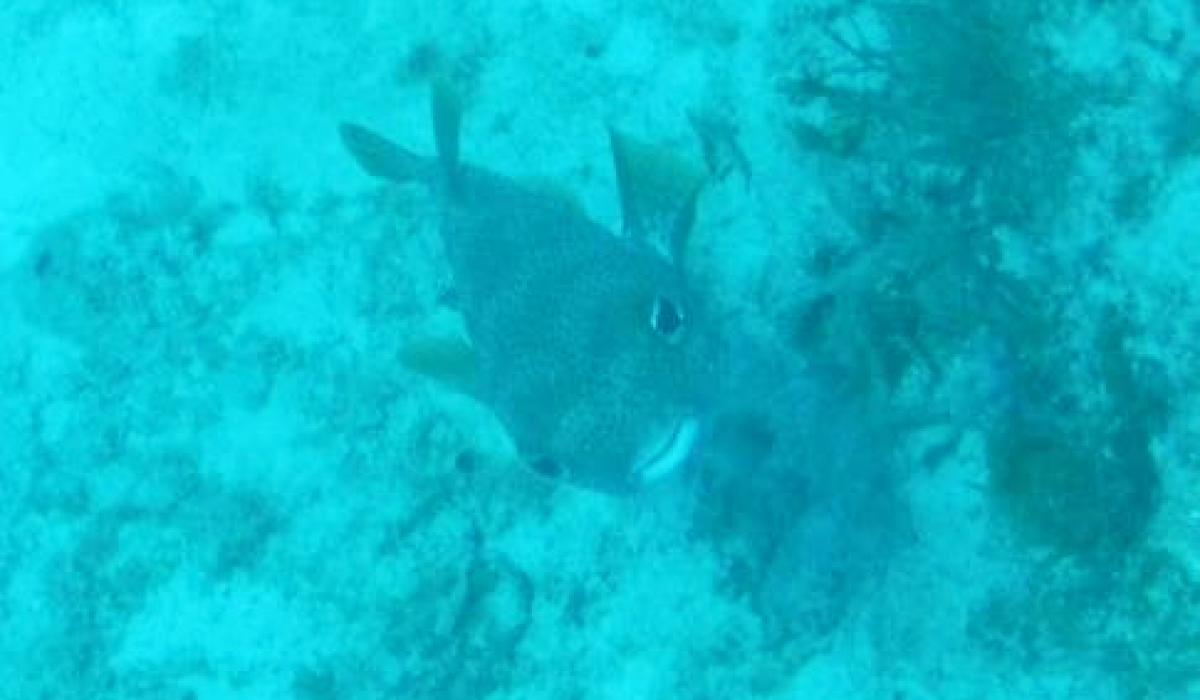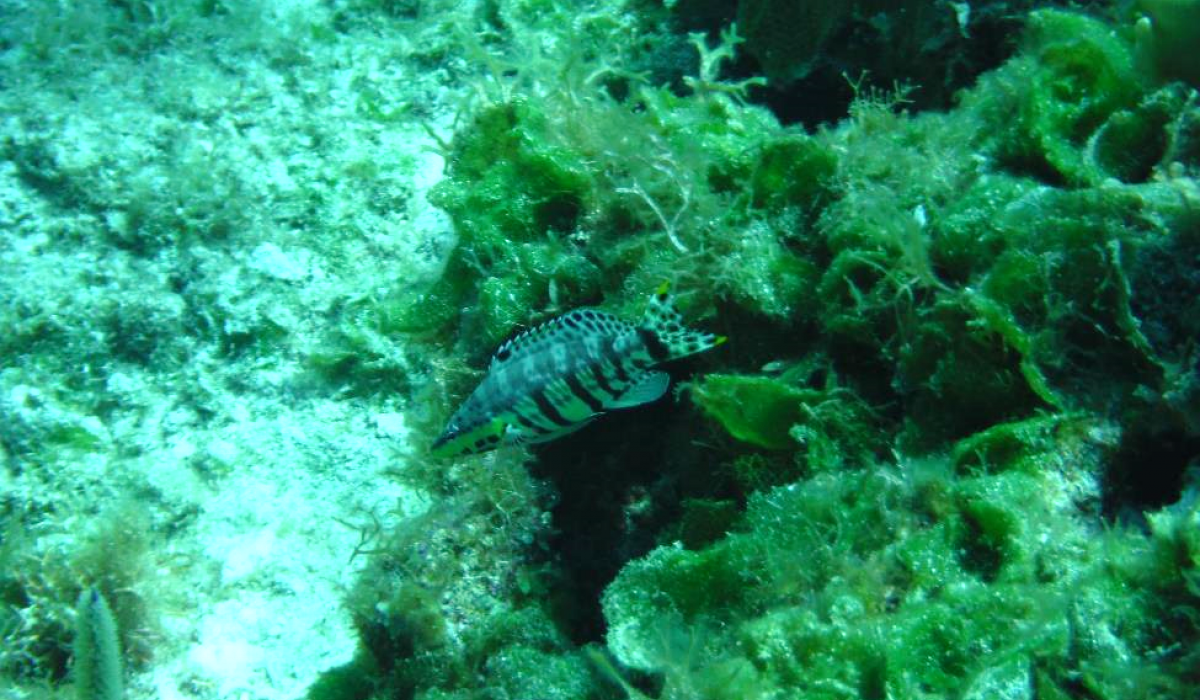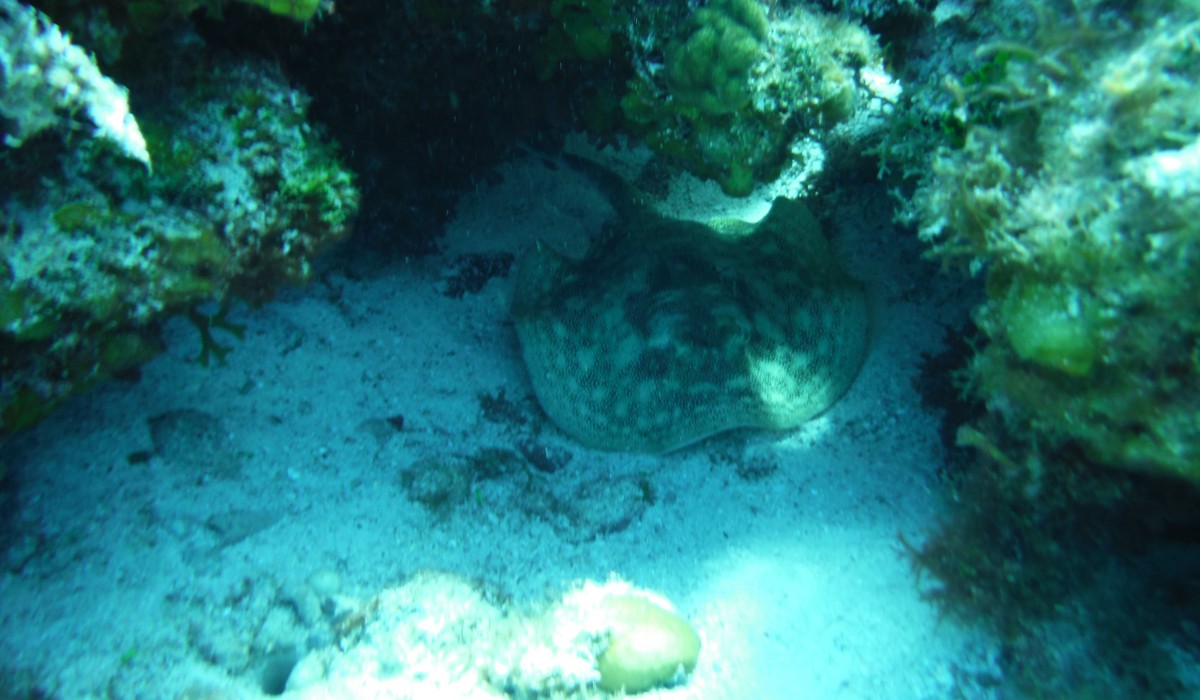Today we awoke to a beautiful sunny day, with a calm ocean breeze here on the Island of San Salvador. We were given the morning site visit off due to it being Sunday. Students had the opportunity to attend church services at the local Catholic Church. Some students chose to grab breakfast and fall back to sleep until lunch, while a small group of other students went down to the beach to catch some rays and swim in the water. Afterwards were served a delicious lunch consisting of spaghetti, pasta salad, rolls, and the opportunity to make a sandwich with the best homemade baked bread you have ever tasted. We then lathered up the sunscreen and headed off to the truck for the ride to Telephone Pole Reef. After recording down GPS location, temperature, wind speed and direction, tide, time, and weather conditions we geared up and started the long swim out to the reef.
The very first thing we encountered when we finally made it out to the reef, was a gorgeous school around 70 Blue Tangs. There were also many large schools of stunning Blue Chromis. If you looked carefully you were able to see some huge squirrelfish taking refuge in the crevices of the coral. There were plenty of Stoplight Parrotfish, Princess Parrotfish, Blue Stripped Grunts, Sergeant Majors, Yellowhead Wrasse, Blueheads, Black Durgons, and Yellow Jacks. Some unique organisms we saw while snorkeling today were we stumbled across a school of around 20 Caribbean Reef Squid. We also were able to see a nice sized Porcupine Puffer that was hiding underneath the bottom of the coral. Another fish we encountered for the first time today was Tilefish which have two long ribbon like fins on dorsal side, and ventral side. The highlight of the trip though came while we were slowing exiting the water. We were able to see a Giant Anemone, Social Feather Dusters, Spined Urchin, and a Reef Urchin. The pinnacle of the trip though came when we observed some Fire Coral in the shallows that had a lot of old discarded shells outside it. A student tempted to pick up a pretty shell next to the dangerous Fire Coral noticed movement within one of the holes in the branches of the Fire Coral. Tucked safely away inside its dangerous home was a Common Octopus. Professor Welch explained to us that the octopus would sit there and wait for unsuspecting prey to pass by and then ambush it from its home. The shells were all the discarded remains of the octopus’ prey.
We then traveled back to the Gerace Research Center where we had a wonderful dinner consisting of rice, chicken, broccoli, macaroni casserole, coleslaw, and for dessert, apple pie. To finish off the day we had a lecture about tides, waves, currents, wind, and grain size of sediment on the beaches. The trip so far has been amazing, wonderful experience and we cannot wait to see what tomorrow will bring.
Jeremy Barkley '17, Colin Stewart '19




